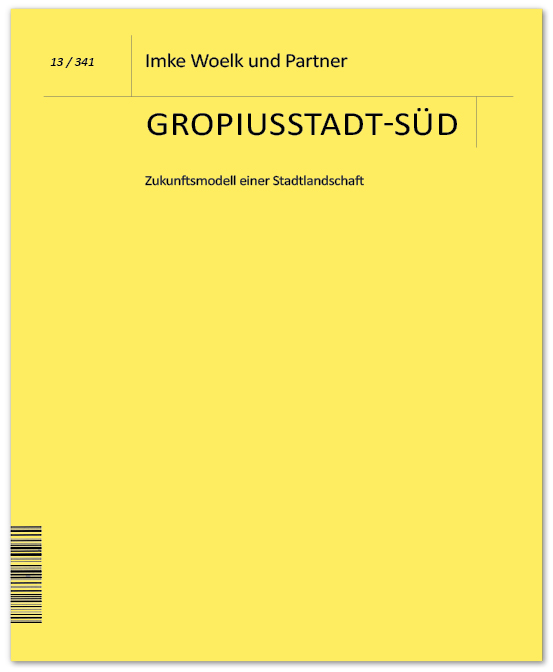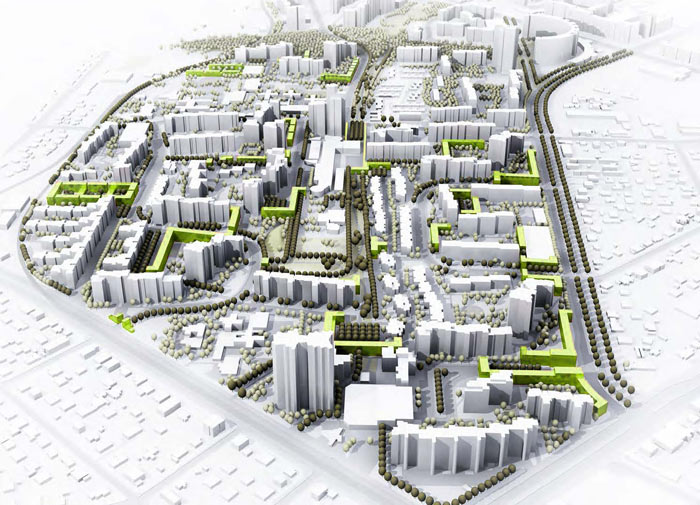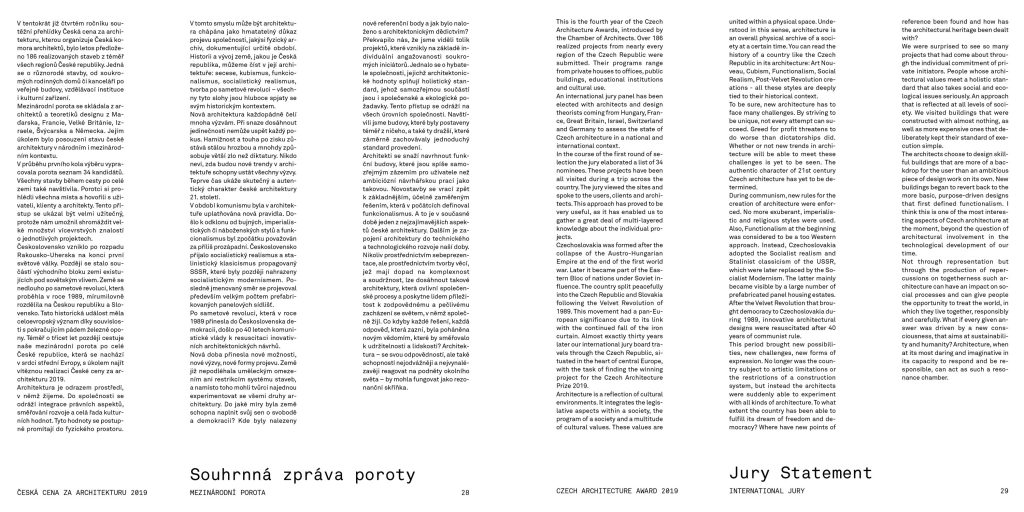
The study analyses the large housing estate in Berlin-Neukölln, built between 1962 and 1975, regarding its spatial and programmatic potential of densification. Chronological layers are appreciated and new flexible and sustainable space structures are added. Changes can be successful by reinforcing the existing identity. The existing is not displaced but adapted, integrated, complemented and expanded.
Contents:
1. Original urban and landscape organisation
2. Transformations in the last decades and analysis of traces
3. Programmatic inventory
4. Today’s demands on use and flexibility of interior and exterior spaces
5. Potentials of the building stock and the green areas
6. Topics of the model and spaces of profiling
7. Zones, borders and transitions
8. Local methods of appropriation

| Location | Berlin-Neukölln, Germany |
| Client | Wohnungsbaugesellschaft (housing assiciation) degewo AG |
| Team | Imke Woelk und Partner in cooperation with Christoph Mäckler Architects |
| Area | 510.000 m2 |
| Date | 2012/13 |

